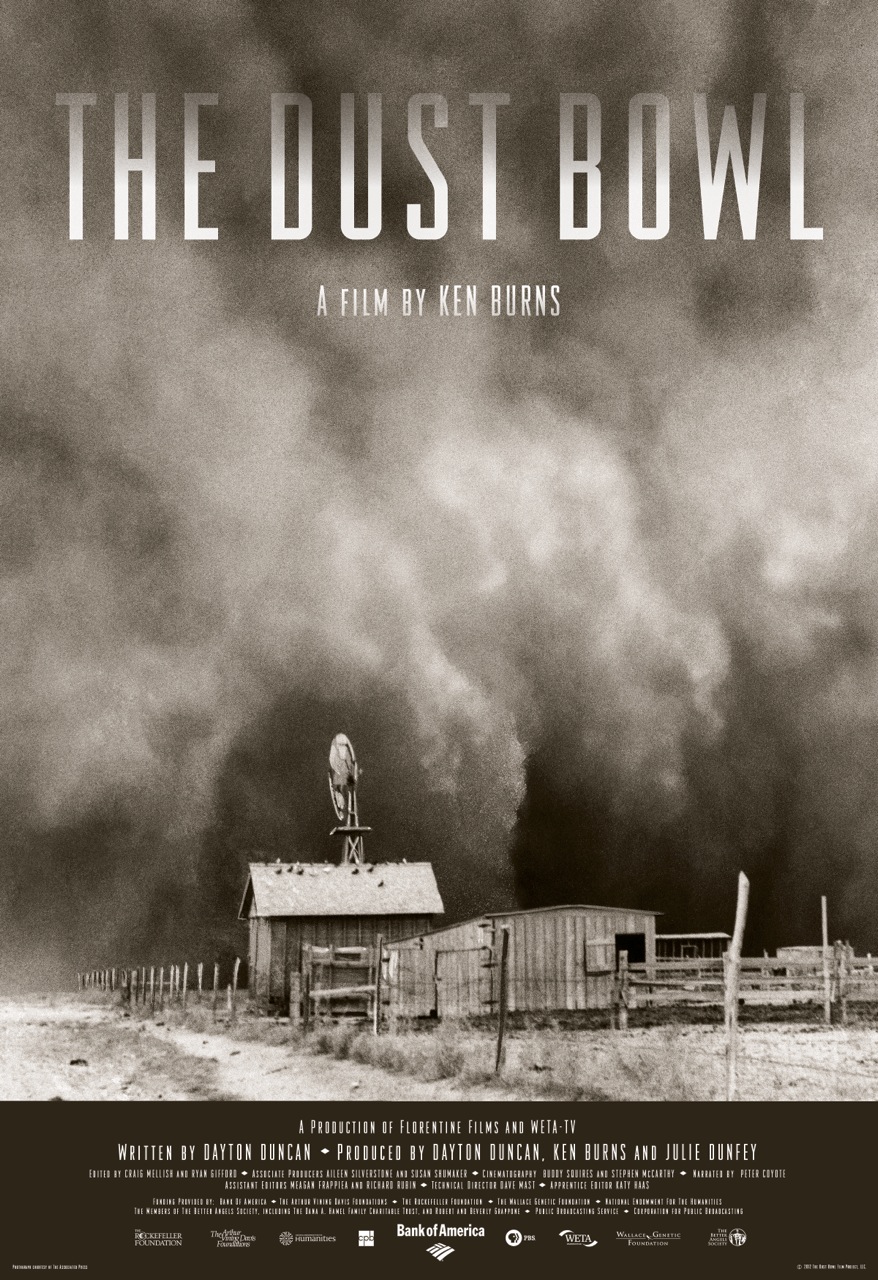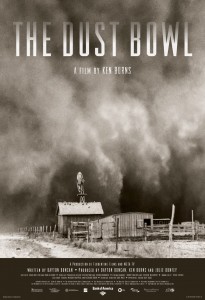
17 May NEW KEN BURNS FILM FEATURED AT MOUNTAINFILM 2012
Editor’s note: “The Dust Bowl,” 120 minutes, Part 1, The Palm, Saturday, May 26, 9:30 a.m., Wilkinson Public LIbrary, Saturday, May 26, 8:30 p.m. Part 2, The Nugget, Sunday, 11:45 a.m., Monday, May 28, Masons, 9:15 a.m. Co-producer Julie Dunfey of Ken Burns’s team is in town with the film.
 Telluride boasts two film festivals which bookend the summer season in town. The first is Mountainfilm in Telluride, which takes place over Memorial Weekend, May 25 – May 28. Mountainfilm dedicated to using film (plus breakfast talks, a symposium, art, music and lively conversations at local venues) to move the tribe from mere thoughts into committed action. The second event is the celebrated Telluride Film Festival, scheduled for Labor Day weekend. Ken Burns, documentary filmmaker extraordinaire divides his loyalty – and his celluloid bounty – between both, premiering his work at both events.
Telluride boasts two film festivals which bookend the summer season in town. The first is Mountainfilm in Telluride, which takes place over Memorial Weekend, May 25 – May 28. Mountainfilm dedicated to using film (plus breakfast talks, a symposium, art, music and lively conversations at local venues) to move the tribe from mere thoughts into committed action. The second event is the celebrated Telluride Film Festival, scheduled for Labor Day weekend. Ken Burns, documentary filmmaker extraordinaire divides his loyalty – and his celluloid bounty – between both, premiering his work at both events.
In 2009, Burns opted to open his “National Parks” series at Mountainfilm. He returns this year with an encore, his latest cinematic dissection of American history, “The Dust Bowl.”
It was the worst man-made ecological disaster in American history in which the heedless actions of thousands of individual farmers, encouraged by their government and influenced by global markets, resulted in a collective tragedy that nearly swept away the breadbasket of the nation.
It was a decade-long natural catastrophe of Biblical proportions—encompassing 100 million acres in Oklahoma, Texas, Kansas, Colorado and New Mexico—when the skies withheld their rains, when plagues of grasshoppers descended on parched fields like a Biblical curse, when bewildered families huddled in dark rooms while angry winds shook their homes and pillars of dust choked out the mid-day sun.
And it was an epic of human pain and suffering: a crucible of dust, drought and Depression, when normally self-reliant fathers found themselves unable to provide for their families; when even the most vigilant mothers were unable to stop the dirt that invaded their houses from killing their children by “dust pneumonia;” when thousands of desperate Americans were torn from their homes and forced on the road in an exodus unlike anything the United States has ever seen.
But the story of the Dust Bowl is also the story of heroic perseverance—of a resilient people who, against all odds, somehow managed to endure one unimaginable hardship after another to hold onto their lives, their land and the ones they loved.
And it is both a study of the roles and limits of government, as well as a morality tale about our relationship to the land that sustains us—a lesson we ignore at our peril.
“The Dust Bowl,” a two-part, four-hour documentary from Ken Burns, chronicles this critical moment in American history in all its complexities and profound human drama. It is part oral history, using compelling interviews of 26 survivors of those hard times, what will probably turn out to be the last recorded testimony of the generation that lived through the Dust Bowl. Filled with seldom seen movie footage, previously unpublished photographs, the songs of Woody Guthrie, and the observations of two remarkable women who left behind eloquent written accounts, the film is also a historical accounting of what happened and why during the 1930s on the southern Plains.
Episide One, “The Great Plow-Up (1890-1935),” begins the drama with the deep history of the place the Plains Indians considered home, where the short grasses that covered the treeless expanse sent roots five feet below the ground, forming a dense sod that could withstand the region’s periodic droughts and violent weather extremes — nurturing deer, antelope, jackrabbits, and the vast herds of buffalo who grazed in numbers beyond counting. After the bison were eliminated and the Native Americans were driven onto reservations, cattlemen took over, until severe winters in the 1880s caused the “Beef Bonanza” to go bust. A severe drought in the 1890s pushed homesteaders who had swarmed the area, off the land.
Episode Two, “Reaping the Whirlwind (1935-1940),” begins a few days after Black Sunday, the remnants of the monstrous storm blow into Washington, DC., where Hugh Hammond Bennett, a soil scientist, aide to President Franklin D. Roosevelt and one of the film’s historical characters, uses the blackened skies to persuade Congress to establish the Soil Conservation Service. A series of government programs attempt to rescue the increasingly desperate inhabitants of the Dust Bowl, many in a state of semi-starvation. Survivors recount stories of eating thistles, and of earning just enough money to get by working for the WPA, NYA and other New Deal programs. Many families had no choice but to make the heart-rending decision to give up their dream and abandon their homes, joining the largest exodus in American history.
“The Dust Bowl,” which airs on PBS on November 18 and 19, 2012, was directed by Burns; written by Dayton Duncan; produced by Duncan, Burns and Julie Dunfey; and edited by Craig Mellish and Ryan Gifford.
Dayton Duncan was also writer and co-producer with Burns on “The National Parks” America’s Best Idea.” He worked with the celebrated filmmaker on other major projects too: “The Civil War,” “Baseball,” and “Jazz.” For a 12-hour series about the history of the American West, broadcast in 1996, Duncan acted as co-writer and consulting producer. It won the Erik Barnouw Award from the Organization of American Historians.
To learn more, click the “play” button and listen to what Duncan has to say.
To view a trailer, go to pbs.org/dustbowl


Pingback:Today I am Fascinated with Ken Burns | Fascinationist
Posted at 09:43h, 18 May[…] I thought I’d see who was the director and it turns out it was Ken Burns… also turns out Ken Burns will be featuring his new film at MountainFilm in Telluride! […]